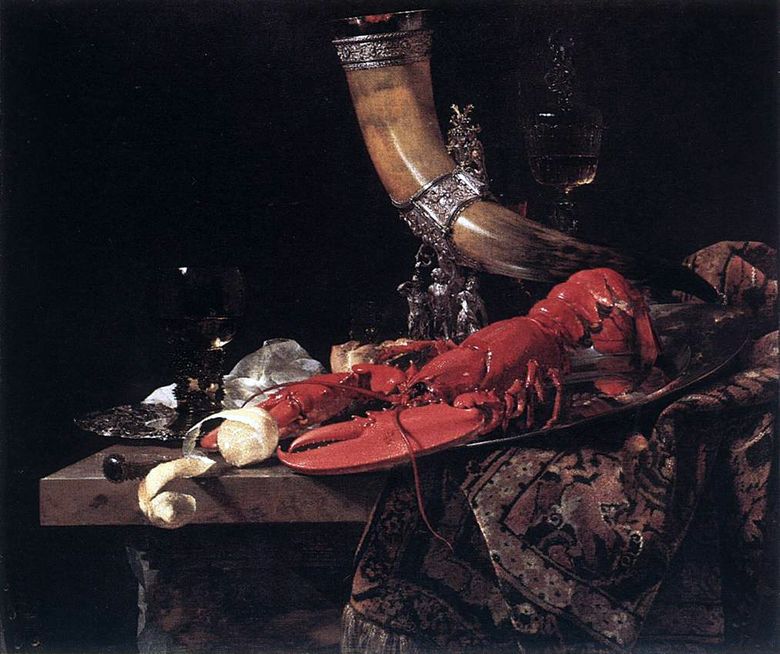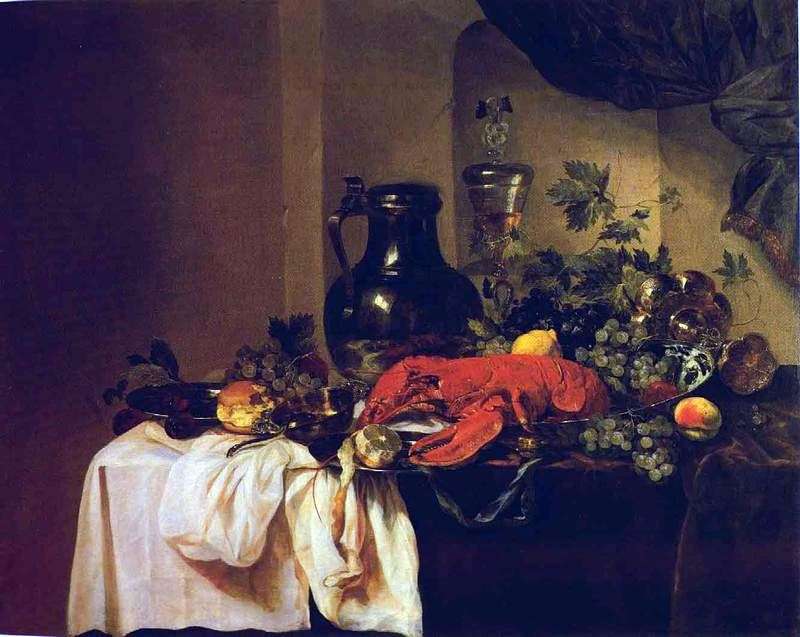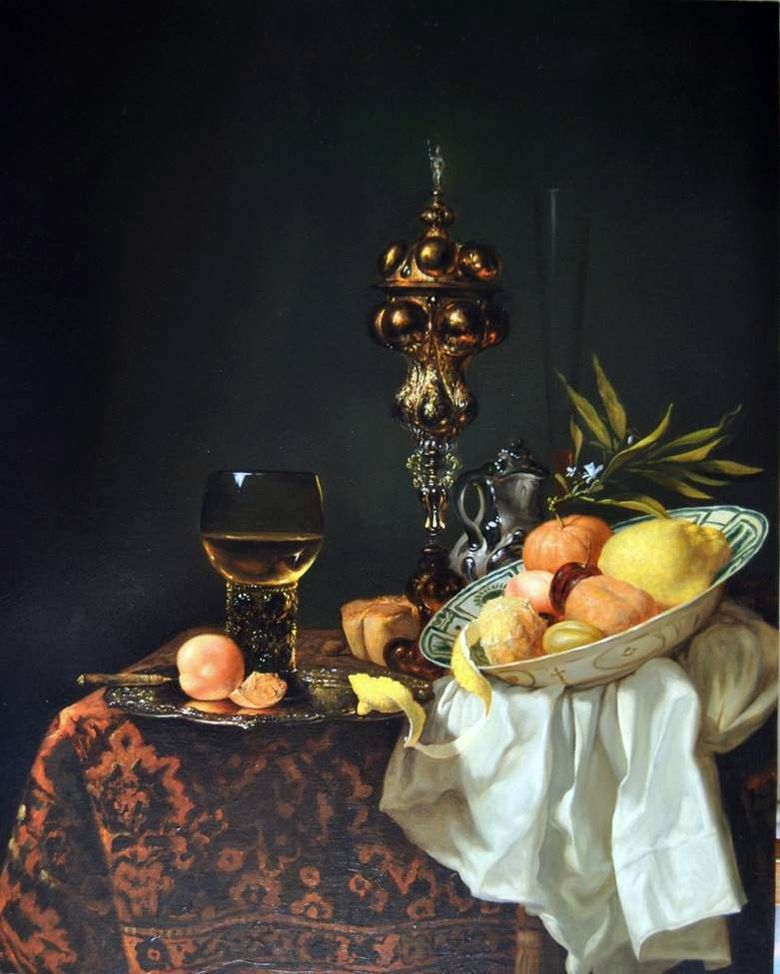
Willem Kalf was one of the leading masters of the still life in Holland of the XVII century. In his mature works, the artist created a type of harmoniously grouped still life with expensive, richly decorated objects of light reflecting materials – gold, silver, tin or glass. His art reached the peak in the Amsterdam period of creativity in the mesmerizing, which received the general name of “luxurious still lifes.”
The set of objects in such paintings did not symbolize the idea of frailty and vanity of earthly existence, but personified the wealth of the Dutch Republic. Nevertheless, there are certain symbols in this still-life.
So, the drinking horn, still an existing masterpiece of Amsterdam jewelers, stored in the Historical Museum in Amsterdam, is supported by a sculptural group of two Roman soldiers and St. Sebastian, who was considered the patron of the city guild of shooters.
Since everything in the canvas speaks about the guild of St. Sebastian, it is logical to assume that the work is written for her. The guild was very rich, and the “sumptuous still life” of Kalfa was consistent with her status.
 Still life with a cup of pearl shell by Willem Calf
Still life with a cup of pearl shell by Willem Calf Dessert by Willem Kalf
Dessert by Willem Kalf Bodegón con Cuerno de Beber – Langosta y Gafas – Willem Kalf
Bodegón con Cuerno de Beber – Langosta y Gafas – Willem Kalf Nature morte avec corne à boire – Homard et verres – Willem Kalf
Nature morte avec corne à boire – Homard et verres – Willem Kalf Still Life with Lobsters by Abraham Beyeren
Still Life with Lobsters by Abraham Beyeren Postre – Willem Kalf
Postre – Willem Kalf Still life with a tin mug by Willem Klas Kheda
Still life with a tin mug by Willem Klas Kheda Dessert – Willem Kalf
Dessert – Willem Kalf